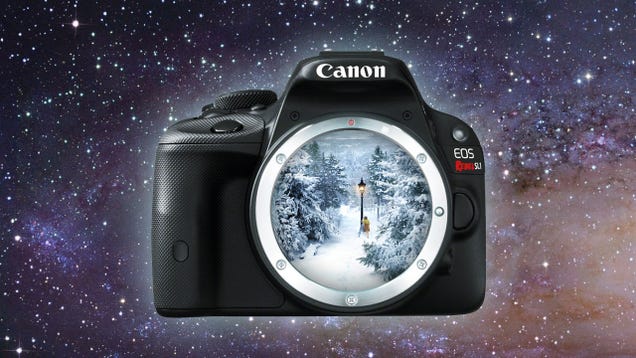
When compared to point-and-shoot cameras, DSLRs come with the promise of superior image quality and increased shooting flexibility. It’s much more than that, though: many upgrade and completely miss major benefits of using a high-end camera. If you’ve got a DSLR, make sure you know about these features before you take another photograph.
Note: This post discusses a variety of features, many of which fall into the intermediate or advanced category of DSLR user. If you haven’t learned the basics of your DSLR yet and need to familiarize yourself with the terminology, you should check out our Photography Night School course before diving into this article.
Program Mode
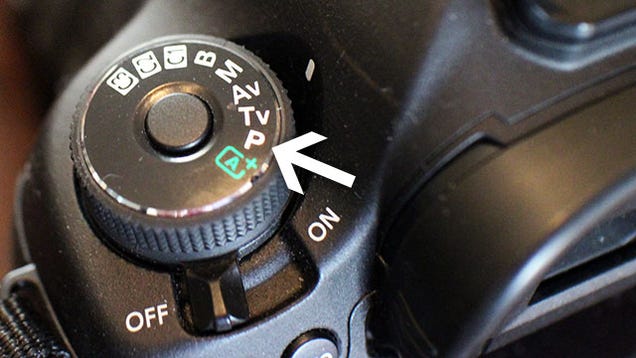
What is it?
If manual and automatic mode had a baby, you’d call it program mode. Like automatic shooting, program mode handles the exposure of the photograph for you. You won’t need to set your shutter speed, aperture, or ISO—terms you should read up on if you’re unfamiliar with them—because the camera will do that for you to ensure you get an acceptably exposed image. While that may sound a lot like automatic shooting, you actually gain more creative control. Your flash won’t engage without your permission, you can set your ISO if you don’t want an automatic choice, you can choose a custom white balance setting, and tell the camera to over or underexpose the image a little bit when necessary.
For an in-depth look at what program mode can do, check out our guide.
What DSLRs have it?
Every DSLR offers program mode.
How can I use it?
Turn the dial (or virtual dial) on your DSLR to the letter P. Some may use a symbol or different marking, but in most cases P represents program mode. From there you can adjust any of the settings mentioned above just as you would in manual mode.
Custom Functions
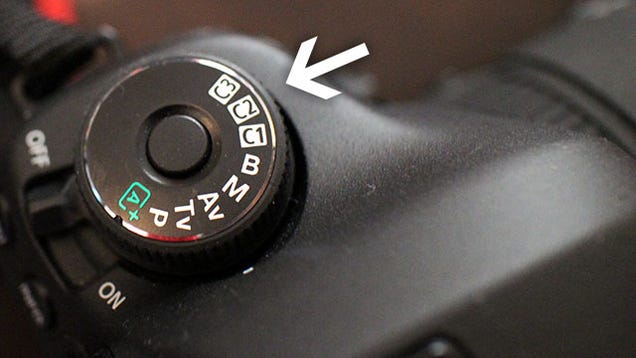
What is it?
You can think of custom functions as shortcuts for your DSLR. You can literally change a bunch of settings in an instant with just a turn of your mode dial. You can quickly set aperture, exposure, ISO, the noise reduction mode, color settings, and much more. This feature prevents you from manually changing your settings over and over again. Instead, you just tell the camera what settings you want and it’ll recall them any time you switch to one of the custom function modes.
What DSLRs have it?
We’re talking solely about Canon DSLRs here, but other manufacturers may offer a similar feature.

How can I use it?
Newer Canon cameras store the custom function settings under the menu section that looks like a little orange camera or yellow wrench (usually towards the end of your choices). Others may keep it elsewhere. Either way, find it in your menu and you’ll have three custom function options called C1, C2, and C3. Each of these options corresponds to a similarly named label on your DSLR’s mode dial. Select the one you want to set from the menu, then choose the settings you want to recall when you choose that custom function mode. When finished, you can turn your camera’s mode dial to C1, C2, or C3 and recall the settings instantly. For more information, consult Canon’s official guide.
Depth of Field Preview
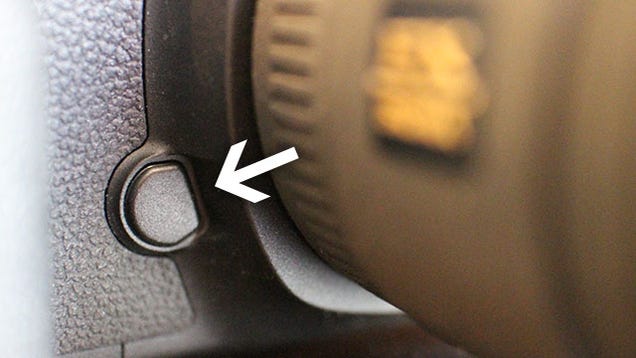
What is it?
When you look through the viewfinder of your camera, you see an approximate frame of what you’re shooting but not necessarily what the photo will look like. Because a lot of choices and settings affect depth of field—which you should read up on if not familiar with the term—and your DSLR doesn’t apply all of those settings until you snap a photo, what you see through the viewfinder isn’t always what you get. Although this may seem weird, if you have a shallow depth of field (meaning only a small part of the image remains in focus) you might find it difficult to compose an image. That said, you’ll often want to know what you’ll get before you press the shutter. The Depth-of-Field Preview gives you a—you guessed it!—preview so you can see what you’ll get through the viewfinder.
What DSLRs have it?
Most DSLRs have a Depth of Field Preview button. Most people forget it exists because manufacturers tend to hide the button on the front of the camera.
How can I use it?
You press the button—after you manage to find it. Most cameras hide the Depth of Field Preview button on the front of the camera near the lens. Because you’ll need your right hand to press the shutter, you’ll likely find that button to the left of the lens. Again, just press it and it’ll do its job.
Picture Styles
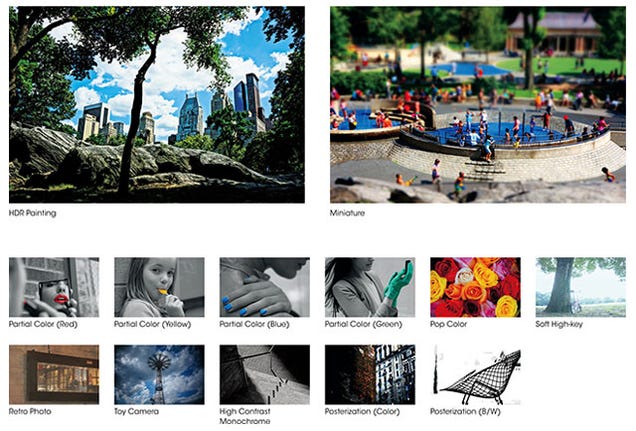
What Are They?
By now you must know Instagram and all its fancy filters. DSLRs, despite their more professional look, decided to cash in on this trend. In some ways it seems kind of silly to have old-school filters on a camera designed to take high-quality photographs, but sometimes these colors adjustments make a great impact. You’ll want to use them sparingly, but you should still consider Picture Styles. At the very least, subtle options like monotone and faded color can produce stunning images under the right circumstances.
What DSLRs have it?
Most popular DSLRs released in the last few years have picture styles, including smaller mirrorless cameras. While you might find this feature under a variety of names, you shouldn’t have much trouble locating it. Even if you have an older camera, you probably have access to a few styles anyway. They not offer the variety of Instagram, but something is better than nothing.
How do I use it?
To use Picture Styles (or whatever your camera calls it), you just need to turn it on and select the style you want. Where you’ll find this option not only depends on your camera’s manufacturer, but often on the camera model as well. Newer DSLRs may have a dedicated button while others require you to go into their menu system to make the change. Either way, you’ll find this feature fast if you look it up in your manual. If you have an older model, look for information on how to shoot in black and white and you should find you various color options. In some cases, your camera may even let you program your own.
Back Button Focus
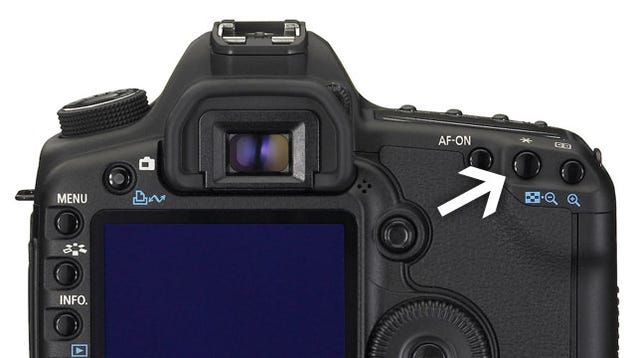
What is it?
You already know that your DSLR engages its autofocus mechanism if you hold its shutter halfway. Most of the time you won’t want to focus any other way, but certain circumstances call for a different method. Back Button Focus allows you to press a button on the back of your camera to engage autofocus and use the shutter only for snapping a picture.
Why would you want this? It prevents your camera from refocusing every time you press the shutter which can save you a lot of trouble if you want to maintain the same focal point. Sometimes people can step in front of your images when you shoot quickly and confuse the camera’s autofocus. This can cause you to miss a shot. On the other side, when shooting in a studio you may only need to focus once but recompose your shot. If you don’t want to engage autofocus every time, this can help. Of course, you can just turn off autofocus or hold down your AE lock button to solve this problem another way, but Back Button Focus gives you a hybrid of both. You get autofocus only when you want it, and—presuming your lens supports it—manual focus and a dedicated shutter button the rest of the time.
What DSLRs have it?
Pretty much every Canon DSLR offers this feature because Canon created the feature. Most Nikon DSLRs allow you to enable the same functionality in a somewhat tedious manner. Other manufacturers may include it but not on every camera. Canon cameras often have a dedicated button. Others require you to set an existing (custom function) button for the feature.
How can I use it?
Whether your DSLR offers a dedicated button or requires you to set one yourself, you’ll need to turn on Back Button Focus on most DSLRs. Canon’s Learning Center offers up a cheat sheet of where you can find this feature on many of their popular DSLRs:
EOS Rebel T3: C.Fn 7 (option 1 or 3)
EOS Rebel T3i: C.Fn 9 (option 1 or 3)
EOS Rebel T4i: C.Fn 6 (option 1 or 3)
EOS 60D: C.Fn IV-1 (option 1, 2, 3, or 4)
EOS 7D: C.Fn IV-1 (Custom Controls — Shutter, AF-ON, AEL buttons)
EOS 6D: C.Fn III-5 (Custom Controls — Shutter, AF-ON, AEL buttons)
EOS 5D Mark II: C.Fn IV-1 (option 2 or 3)
EOS 5D Mark III: C.Fn menu screen 2 (Custom Controls — Shutter, AF-ON, AEL buttons)
EOS-1D X: C.Fn menu screen 5 (Custom Controls — Shutter, AF-ON, AEL buttons)
Nikon users should read these instructions, as the process requires some setup rather than just flipping a switch in the DSLR’s settings. Other cameras get pretty specific, so consult your manual for setup information. If you can’t find anything there, a quick web search for “back button focus” plus the name of your camera model should turn up the information you need.
Custom Firmware
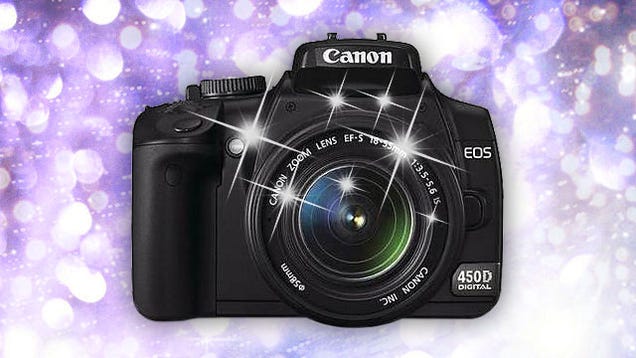
What is it?
Custom firmware adds features to your DSLR that the manufacturer didn’t add themselves. Most of the time you buy a camera that can do quite a bit more than it lets on. You can unlock that functionality with custom firmware. The downside? Installation may void your warranty.
What DSLRs have it?
Several popular DSLRs from Canon, Nikon, and Panasonic have custom firmware. To find out if your camera has some, check out DIY Photography’s excellent roundup of options.
How can I use it?
How you install custom firmware depends on your DSLR. In most cases, you just load it up like you would an official firmware update. Sometimes this will overwrite existing firmware, but some options (like Magic Lantern, primarily for Canon cameras) only loads itself temporarily (safer but less convenient). Either way, when using custom firmware you run the risk of voiding your warranty and potentially screwing up your camera. Make sure your camera supports the firmware you try to install and that you follow the instructions carefully.
This post covers a variety of cool features most people don’t know about in their DSLRs, but you’ll find many more if you start digging. If you really want to get the most out of your camera, search for something new that you didn’t know about and learn how it works. Your DSLR’s manual covers every little minute detail of its operation, so you have an entire menu of options. You don’t want to end up with a glorified point-and-shoot. Your DSLR offers tons of features, but you can’t use them if you don’t know they exist.
Nenhum comentário:
Postar um comentário
Observação: somente um membro deste blog pode postar um comentário.